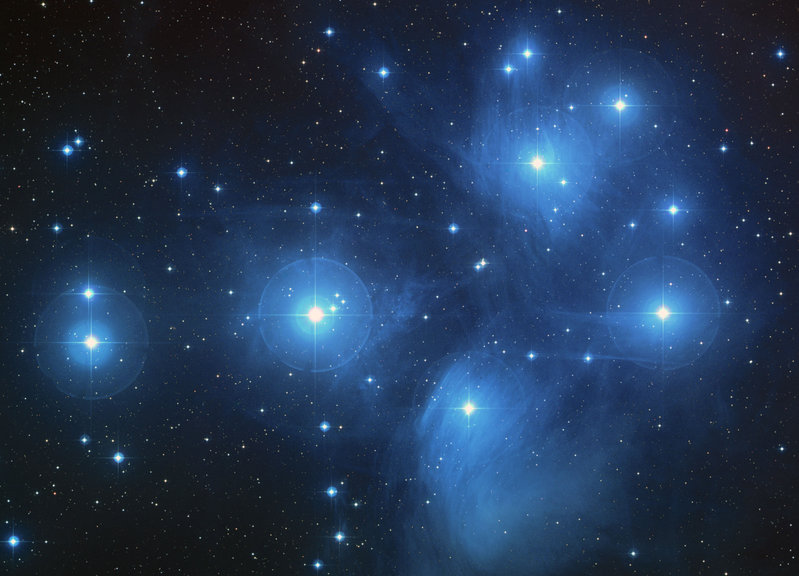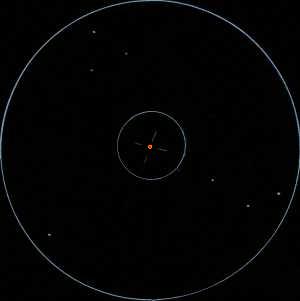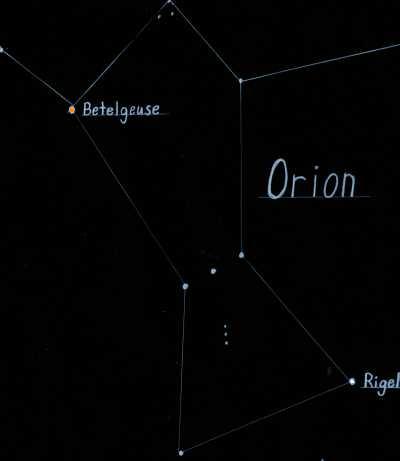Copyright 2008 Starry Mirror



The
TM
Astronomy From West Virginia
BETELGEUSE, A TRUE SUPERSTAR, RIDES HIGH IN THE LATE WINTER SKY
BRIDGEPORT, WV (S-M) - The star Alpha Orionis, better known as Betelgeuse, is now high in the evening sky just after sunset. The famous star is hard to miss in the northeast part of Orion, as it is currently shining at about magnitude .7 and its bright red color is apparent.
It's always a good idea to monitor Betelgeuse, as the star is at the end of its life. It is a massive star which has existed for only a few million years, and now it is ready to explode. The explosion could come within the next few thousand years, which is only a moment in the scheme of things astronomical. If the star explodes within our lifetimes, we will see it as a brilliant point of light. Despite its distance of 600 light years, it will light up the Earth brighter than a full Moon - and all this light will be coming from just a pinpoint. The star will be almost blindingly bright.
As it is now, Betelgeuse is a semi-regular variable star. Not much routine photometry is done on the star, and so we have been monitoring it from time to time with a diode-type photometer. As of March 3, the star was at about magnitude .755, and it has brightened by about .25 magnitude since December. With good weather, it is usually possible to detect changes in brightness over just a couple of days.
The variability of Betelgeuse is another example of something astronomical which can be studied with only modest equipment. There are many small-amplitude variable stars in the sky, and there is no way that much time on giant telescopes in Hawaii or in space can be spent doing routine monitoring of these objects. Someday relatively soon, one of these old stars will explode in a supernova, and data from what appeared at the time to be routine photoelectric photometry will become invaluable in determining the sequence of events leading up to the final demise of a giant star. - GW

Orion is quite possibly the most famous constellation, and it can't be missed high in the south after sunset in late Winter. Interested persons should look soon, as the lengthening days make the Winter constellations seem to disappear very quickly.
Doing photometry of a star does not provide one with much of a view. The star must be kept centered in a bulls-eye as hundreds of measurements are taken.
